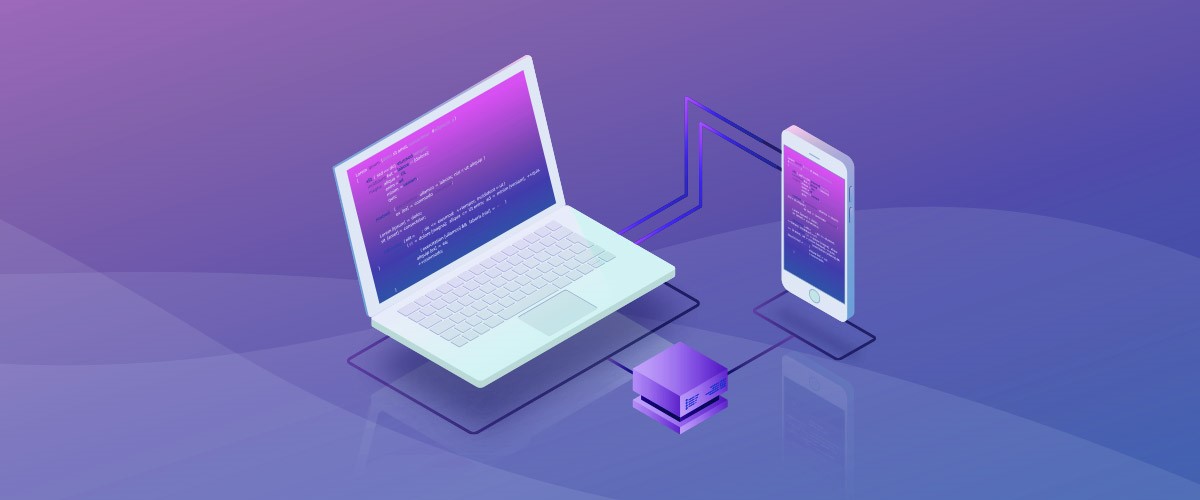Make your business software more intelligent through the power of APIs

In the old days, systems and web applications were isolated. Nowadays, applications and software can talk to each other. But why do we want applications to be able to communicate with each other? An API makes it simple for a mobile or web application to incorporate the functionality of other services.
In this blog post, we will tell you how this is practically realized with the help of an application programming interface — API — and go into more detail about its benefits. For the reader who is scared to read on, you don’t have to be a code wizard to understand the text below.
API for dummies
An API is a rather abstract concept for which there are different definitions on the internet, often too technical. An API can be compared to a menu in a restaurant. You choose a certain dish from the menu. The waiter passes this order on to the kitchen that prepares the dish. You have no idea how the dish is prepared, and you don’t have to know. The waiter brings the desired dish to your table.
Simply put, you must look at an API as a building block that is placed between two applications. It ensures that these applications can communicate with each other in an automatic and structured way. With this building block, you can expand existing software applications with functionalities that are not included in the current software. So you don’t have to use different software for each service. It goes without saying that this creates new opportunities and opens the door for innovation and growth.

API applications have grown explosively in recent years. Large companies such as Facebook, LinkedIn, Spotify, Google, Gmail, Amazon Web Services, etc., choose to make an API available so that other developers can create more powerful products with more functionality.
Faster, cheaper, smarter
All-in-one software companies will realize that many of the functionalities they provide in their applications do not apply to all of their customers and, in addition, perform far poorer than APIs offered by companies with one specific focus. Precious resources will no longer be spent on reinventing the wheel, but APIs from these specialized companies will be relied upon.
Also, within our own planning software, we use external APIs such as those from Google Maps and TomTom. They provide us with, for example, the driving distance and driving time between different locations.
Pocket magazine Forbes already declared 2017 to be the year of the API. This trend has been ongoing for a few years now and will continue to gain importance in the near future; just think of the rise of the internet of things (IoT), whereby everyday objects form entities on the internet that communicate with each other via — you guessed it — APIs.
Make your software more intelligent
In recent years, many companies have taken a step toward complete automation and digitization by deploying an ERP, TMS, WMS or similar application. These are management systems that are particularly useful and provide a daily service.
An ERP system, for example, will support an organization in all its processes: from A to Z, everything is neatly streamlined—from quotation to order, picking, delivery, and invoicing. Employees are no longer doomed to Excel files and everything is structured and automated.
Unfortunately, such systems are anything but intelligent when it comes to planning. An ERP package will indicate which customers need deliveries one day, but will not calculate how to organize its distribution optimally. Deliveries are often placed on routes based on simple rules of thumb or fixed rounds in the ERP system labeled “historically grown ”. However, more efficient planning could significantly reduce costs.
We also make our solutions available to our end customers via an API. The Movetex package consists of various APIs. By integrating them into today’s software, they can also be easily extended with smart and advanced routing. The API makes use of the valuable data in this software, and employees continue to work in their familiar digital environment.
Conclusion: “cobbler, stick to your last” becomes more relevant than ever
Companies will increasingly specialize in one specific niche and offer these functionalities via standardized building blocks or APIs. Using APIs, these algorithms can therefore be quickly and easily integrated into existing software applications.
At Movetex, we have a passion for solving complex planning problems. Our story starts where other parties such as ERP, TMS, and WMS partners have to stop. Fortunately, you can easily expand the software used today with our planning software. And this is thanks to the power of APIs.
Curious to see how it works? Our experts will be happy to show you what Movetex can do for your business. Leave your details hereand we will contact you for a free demo session.
 Written by
Written byKen De Norre - De Groof
Popular cases
- No posts found
